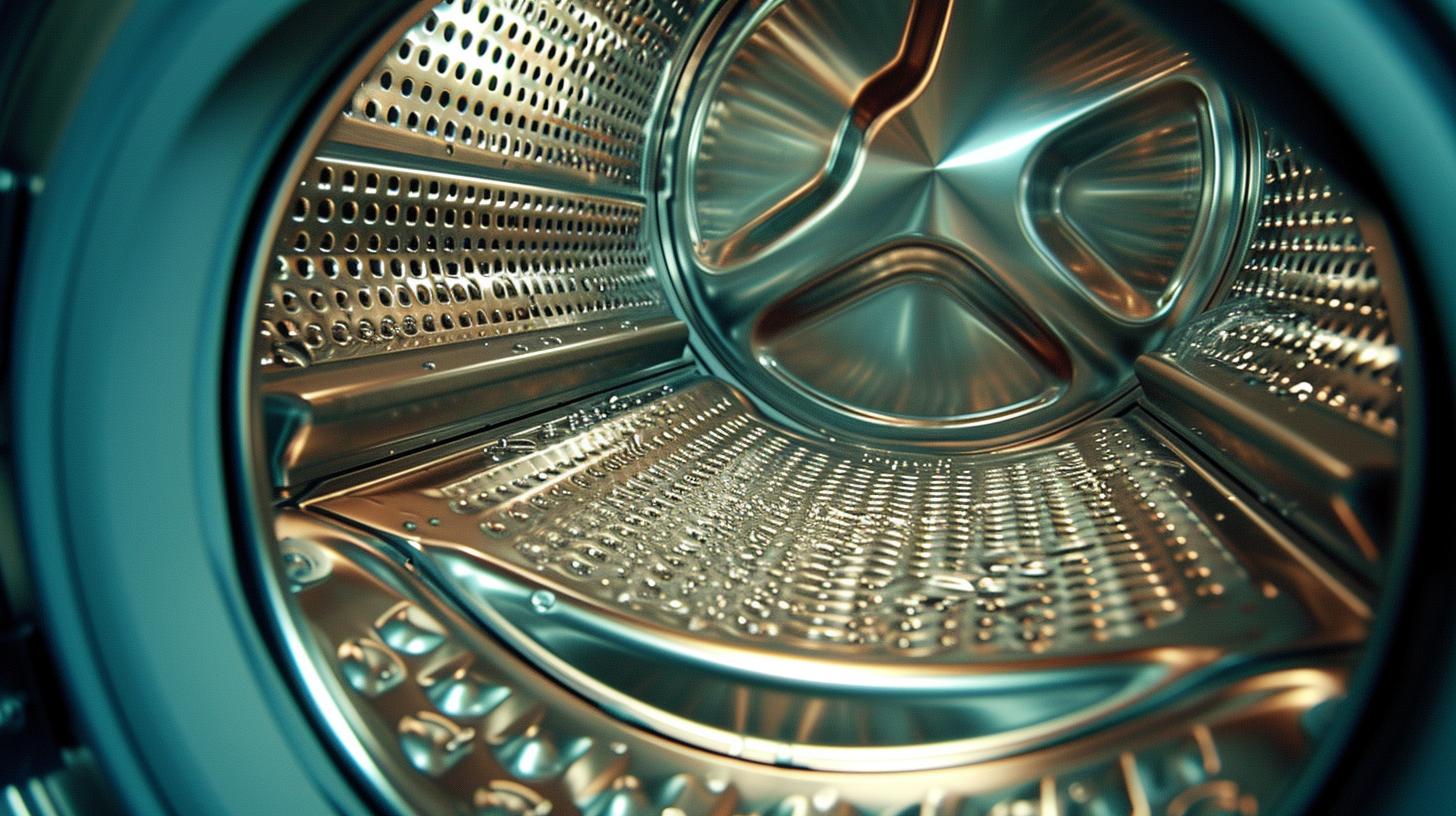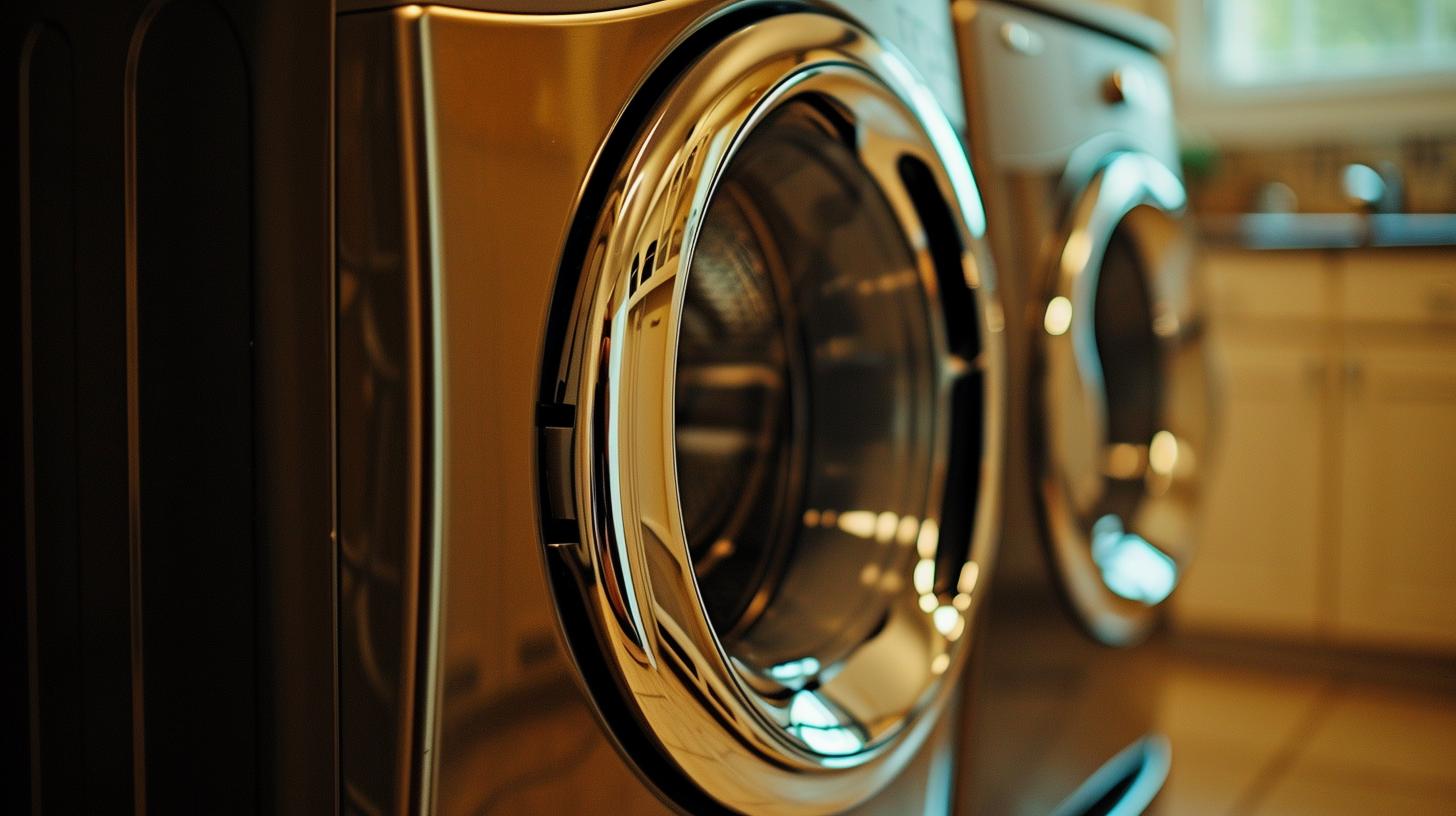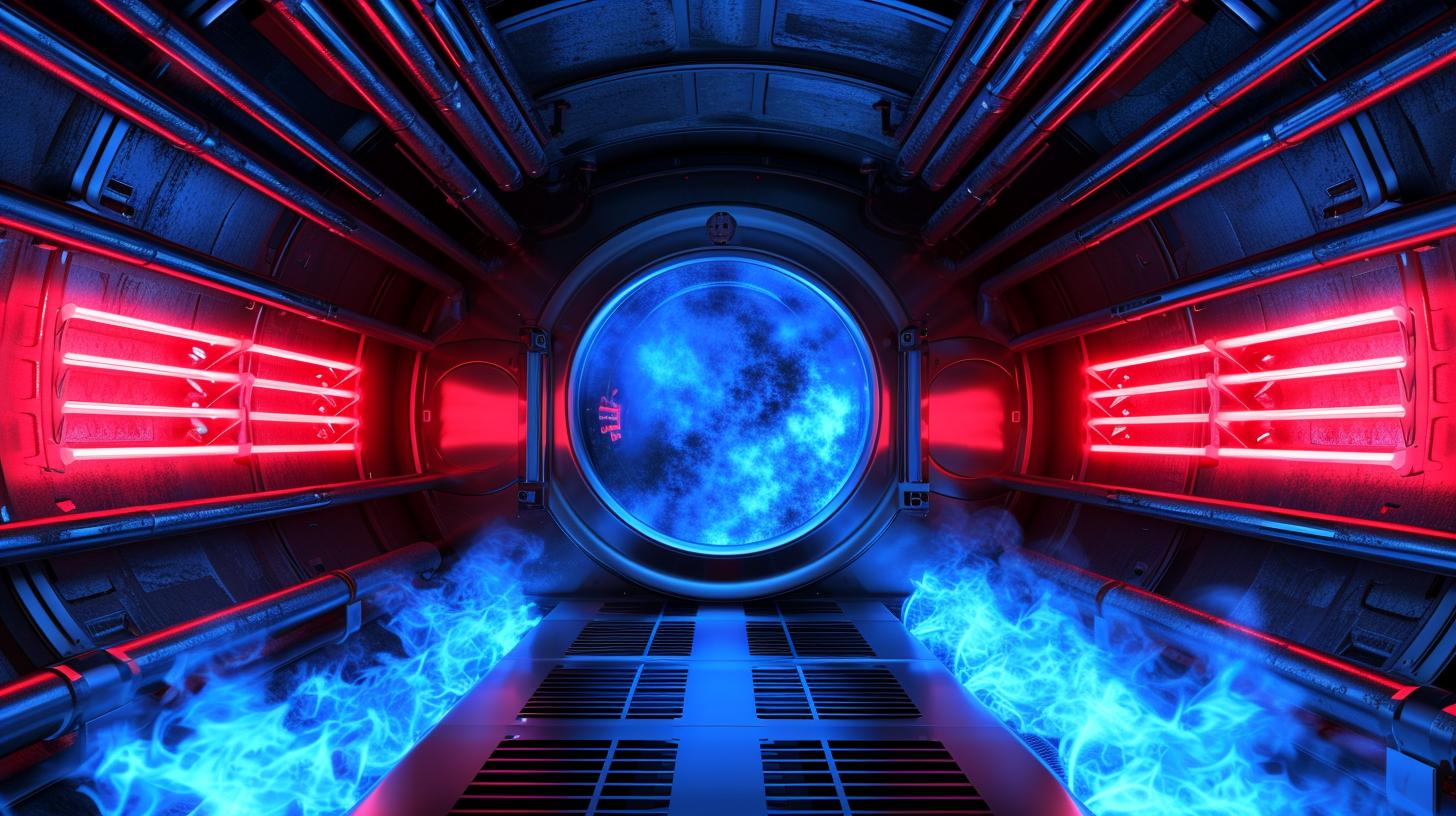Whirlpool dryers are known for their reliability and efficiency in drying clothes, with the heating element playing a crucial role in its operation. The heating element is a vital component of a Whirlpool dryer, responsible for generating the heat needed to dry clothes effectively.
Understanding how the heating element works, identifying signs of a faulty element, diagnosing and troubleshooting issues, and ensuring safe replacement are all essential for maintaining the dryer’s performance. This article will provide an overview of Whirlpool dryers and delve into the importance of the heating element, offering valuable insights for users to optimize their dryer’s functionality.
Whirlpool dryers are designed to provide efficient drying solutions for households, and the heating element is integral to their performance. The heating element is responsible for generating the heat necessary to dry clothes thoroughly and quickly, making it a critical component of the appliance. Whether gas or electric, understanding how the heating element functions is essential for users to maximize their dryer’s capabilities.
Despite being a durable component, a faulty heating element can lead to ineffective drying or no heat at all. Recognizing signs of a malfunctioning heating element is crucial for timely repairs and maintenance. By understanding these indicators, users can address issues promptly and prevent further damage to their Whirlpool dryers.
Diagnosing and troubleshooting problems related to the heating element require careful attention to detail and adherence to safety protocols. Users must follow specific steps to identify issues accurately before attempting any repairs or replacements. Additionally, learning how to safely replace the heating element is essential in maintaining the optimal performance of Whirlpool dryers while ensuring user safety.
Regular maintenance plays a key role in extending the lifespan of a Whirlpool dryer’s heating element. By implementing proper care practices, users can prevent unnecessary wear and tear on the component, ultimately prolonging its durability and efficiency in drying clothes. Through this article series on Whirlpool dryers’ heating elements, readers will gain valuable insights into optimizing their appliance’s performance through informed decision-making processes.
Understanding How the Heating Element Works in a Whirlpool Dryer
The heating element in a Whirlpool dryer is a crucial component that plays a significant role in the drying process. Understanding how the heating element works can help users diagnose any issues and ensure that their dryer operates efficiently.
To comprehend how the heating element functions, it’s essential to know that it is responsible for generating the heat needed to dry clothes effectively. When the dryer is turned on and the cycle begins, the heating element activates and starts to warm up.
As the air inside the dryer drum passes over the heated coils of the heating element, it becomes hot and is then circulated throughout the drum. This hot air absorbs moisture from the wet clothes, causing it to evaporate and ultimately dry the laundry.
Here are some key points to understand about how the heating element works in a Whirlpool dryer:
- The thermostat regulates the temperature of the heating element, ensuring that it does not get too hot or fail to reach optimal drying temperatures.
- The heating element is typically made of coiled wire or metal sheathed elements that are designed to withstand high temperatures and continuous use.
- Electric dryers utilize electricity to power their heating elements, while gas dryers use a gas burner assembly to generate heat.
Understanding these fundamental aspects of how the heating element operates can aid users in identifying potential issues before they escalate into major problems with their Whirlpool dryer.
If your Whirlpool dryer is taking longer than usual to dry clothes or if your laundry comes out damp even after a full cycle, it could be a sign of a malfunctioning heating element. It’s essential to promptly address any signs of trouble with your dryer’s heating element to ensure that your appliance continues to function optimally.
Signs That Indicate a Faulty Heating Element in a Whirlpool Dryer
A faulty heating element in a Whirlpool dryer can cause a lot of inconvenience, especially when you rely on your dryer for your laundry needs. It’s important to be able to recognize the signs that indicate a faulty heating element so you can address the issue promptly. Here are some common signs to look out for:
1. Clothes not drying properly: One of the most obvious signs of a faulty heating element is when your clothes are not drying properly, even after running the dryer for a full cycle. If your clothes are still damp or cold to the touch, it could be a result of the heating element not functioning correctly.

2. No heat: Another clear indicator of a faulty heating element is when there is no heat being produced at all. If you notice that your dryer is running but there’s no warmth coming from it, it’s likely that the heating element is the culprit.
3. Longer drying times: If you’ve noticed that your clothes now take longer to dry than they used to, it could be a sign that the heating element in your Whirlpool dryer is starting to fail. This means that the appliance will run longer cycles and consume more energy as well.
4. Overheating: On the other end of the spectrum, if you notice that your dryer is overheating or producing an unusual amount of heat, this could also indicate an issue with the heating element.
5. Burnt smell: A burning smell coming from your dryer while it’s in use is never a good sign and can suggest problems with the heating element or other components within the appliance.
If you’re experiencing any of these issues with your Whirlpool dryer, it’s important to address them promptly to avoid further damage to your appliance and ensure that your laundry needs are met efficiently and effectively.
Steps for Diagnosing and Troubleshooting the Heating Element in a Whirlpool Dryer
The heating element is a crucial component of a Whirlpool dryer, as it is responsible for generating the heat needed to dry your clothes effectively. When the heating element malfunctions, it can lead to frustration and inconvenience. Fortunately, diagnosing and troubleshooting the heating element in a Whirlpool dryer can be done with relative ease.
To begin diagnosing the issue, start by unplugging the dryer and locating the heating element. This can typically be found behind the front or rear panel of the dryer. Once located, visually inspect the heating element for any visible signs of damage such as breaks or burns. In some cases, a faulty heating element may also show signs of discoloration.
Next, you can use a multimeter to test the continuity of the heating element. This involves removing the wires connected to the heating element and using the multimeter to check for electrical continuity. If there is no continuity, this indicates that the heating element is faulty and needs to be replaced.
If you are unsure about how to use a multimeter or diagnose the issue on your own, it is advisable to contact a professional appliance repair technician. They have the expertise and tools needed to accurately diagnose and troubleshoot any issues with the heating element in your Whirlpool dryer.
In addition to checking for visible damage and testing for continuity, another common troubleshooting step involves checking other components such as fuses, thermostats, and thermal cutoffs that are connected to the heating element. These components work in conjunction with the heating element to regulate temperature and ensure safe operation of the dryer.
Once you have identified a faulty heating element or any other related issues, it is important to address these problems promptly. Delaying repairs can lead to further damage to your dryer and potentially result in higher repair costs down the line.
How to Safely Replace the Heating Element in a Whirlpool Dryer
If you have determined that the heating element in your Whirlpool dryer needs to be replaced, it is important to do so in a safe and cautious manner. Before beginning the replacement process, make sure to unplug the dryer from the power source to avoid any electrical accidents. Additionally, it is advisable to wear protective gloves and eyewear to prevent any injuries during the replacement.
The first step in replacing the heating element is accessing the interior of the dryer. This typically involves removing the back or front panel of the machine. Refer to your Whirlpool dryer’s manual for specific instructions on how to access the heating element area. Once you have gained access, locate and remove the existing heating element.
When removing the old heating element, take note of its position and how it is connected within the dryer. It is crucial to disconnect any wires or attachments carefully to avoid damaging other components of the machine. Make sure to handle the old heating element with care as well, as it may still be hot from prior use.

Before installing the new heating element, thoroughly clean out any accumulated lint or debris from inside the dryer. This will help prevent potential fire hazards and improve the efficiency of the new heating element once installed. Once cleaned, carefully place and attach the new heating element in its designated position within the dryer.
After securing the new heating element in place, reconnect any wires or attachments that were disconnected earlier. Double-check all connections and fittings to ensure that everything is properly reattached before closing up and sealing off the interior of the dryer. Finally, plug back in your Whirlpool dryer and conduct a test run to confirm that your newly installed heating element is functioning correctly.
By following these steps for safely replacing a faulty heating element in your Whirlpool dryer, you can ensure that your machine continues to operate effectively and safely for years to come. Remember that if you are unsure about replacing a heating element yourself, it’s always best to seek professional assistance from a qualified technician who has experience working with Whirlpool dryers.
Common Mistakes to Avoid When Working With the Heating Element in a Whirlpool Dryer
When working with the heating element in a Whirlpool dryer, it is important to be mindful of certain common mistakes that can occur during maintenance and replacement. Avoiding these mistakes can prevent damage to the dryer and ensure safety while working with electrical components.
Skipping the Safety Precautions
One of the most common mistakes when working with the heating element for a Whirlpool dryer is skipping the necessary safety precautions. It is crucial to always unplug the dryer from the power source before attempting any maintenance or replacement. Additionally, using insulated gloves and staying aware of potential electrical hazards are essential safety measures to avoid accidents or injury.
Not Consulting the Owner’s Manual
Another mistake to avoid is not consulting the owner’s manual for specific instructions and guidelines related to the heating element. The owner’s manual provides valuable information on how to safely access and replace the heating element in a Whirlpool dryer. Ignoring this resource can lead to improper installation or damage to the heating element.
Ignoring Proper Ventilation
Improper ventilation during maintenance or replacement of the heating element can also lead to issues in a Whirlpool dryer. Failing to ensure adequate ventilation while working with electrical components can increase the risk of overheating, which may affect not only the heating element but other parts of the dryer as well.
Using Incorrect Replacement Parts
Using incorrect replacement parts for the heating element is a common mistake that can cause further damage to the dryer. It is important to ensure that any new heating element or related components are compatible with the specific model of Whirlpool dryer being serviced. Using mismatched parts can lead to inefficiency or even permanent damage.
Rushing Through Diagnosis and Troubleshooting
Rushing through the diagnosis and troubleshooting process when dealing with a faulty heating element can result in overlooking other potential issues with the dryer. It is important to thoroughly assess all possible causes of malfunction before focusing solely on replacing the heating element.
By being mindful of these common mistakes, homeowners and technicians can effectively maintain and replace a faulty heating element in a Whirlpool dryer without encountering unnecessary complications or risks.
Tips for Extending the Lifespan of the Heating Element in a Whirlpool Dryer
Using the Right Detergent and Fabric Softener
Using the correct detergent and fabric softener can play a significant role in extending the lifespan of the heating element in your Whirlpool dryer. Using too much detergent or fabric softener can result in residue buildup on the heating element, which can reduce its efficiency over time. It’s essential to follow the manufacturer’s guidelines for detergent and fabric softener usage to prevent any unnecessary strain on the heating element.
Cleaning the Lint Trap and Ventilation System
Regularly cleaning the lint trap after each cycle is crucial for preventing lint buildup in the ventilation system. A clogged ventilation system can cause excessive heat and strain on the heating element, leading to potential damage. Make sure to also clean out the ventilation system at least once a year to ensure proper airflow and prevent any issues with the heating element.
Avoid Overloading the Dryer
Overloading your Whirlpool dryer can put unnecessary strain on the heating element. It’s important to follow the recommended load capacity for your specific model to prevent overheating and potential damage to the heating element. By avoiding overloading, you can help maintain proper airflow and reduce wear and tear on the heating element.

Regular Maintenance Checks
Performing regular maintenance checks on your Whirlpool dryer, including inspecting the heating element for any signs of wear or damage, can help catch potential issues early on. Additionally, ensuring that all other components of the dryer are functioning correctly can indirectly contribute to prolonging the lifespan of the heating element.
Proper Ventilation
Ensuring that your dryer is properly ventilated is essential for maintaining optimal performance of the heating element. Proper ventilation helps regulate temperature and prevents overheating, which can lead to premature deterioration of the heating element. Check for any obstructions in the ventilation system and ensure that there is adequate airflow around your dryer.
Taking these preventative measures will not only extend the lifespan of your Whirlpool dryer’s heating element but also improve its overall efficiency and performance, saving you time and money in potential repairs or replacements down.
the line.
Comparison of Different Types of Heating Elements for Whirlpool Dryers (Gas vs Electric)
When it comes to choosing a heating element for your Whirlpool dryer, one of the most important decisions is whether to opt for a gas or electric heating element. Both options have their own set of advantages and drawbacks, so it’s essential to understand the differences between the two before making a decision.
Gas heating elements are known for their efficiency and lower operating costs. They heat up quickly and can reach higher temperatures than electric dryers, which means your clothes can dry faster. Additionally, gas dryers tend to produce less static cling in clothing compared to electric dryers. However, gas dryers generally have a higher upfront cost and require a gas line in your home, which may not always be feasible.
On the other hand, electric heating elements are more common and easier to install since they only require access to an electrical outlet. They also tend to have a lower upfront cost compared to gas dryers. However, electric dryers typically take longer to heat up and can lead to higher energy bills in the long run. Additionally, they may not be as efficient at drying large loads of laundry as quickly as gas dryers.
It’s vital to consider your specific needs and circumstances when choosing between gas and electric heating elements for your Whirlpool dryer. If you value energy efficiency and faster drying times, a gas dryer may be the better option for you. On the other hand, if cost-effectiveness and ease of installation are top priorities, an electric dryer might be more suitable.
The Importance of Regular Maintenance for the Heating Element in a Whirlpool Dryer
In conclusion, regular maintenance for the heating element in a Whirlpool dryer is crucial to ensure the appliance operates efficiently and effectively. The heating element is an essential component of the dryer, responsible for generating the heat needed to dry clothes thoroughly. Without proper maintenance, issues can arise that may lead to costly repairs or even the need for a replacement heating element.
By understanding how the heating element works in a Whirlpool dryer and being aware of signs that indicate a faulty heating element, users can address potential problems early on. Diagnosing and troubleshooting any issues with the heating element should be done carefully and safely, following recommended steps to avoid further damage to the appliance. In addition, replacing the heating element should also be carried out in a cautious manner to prevent any accidents or complications.
It’s important for users to be aware of common mistakes to avoid when working with the heating element in a Whirlpool dryer. Mistakes such as using incorrect parts or improper handling can result in further damage or safety hazards. Following manufacturer guidelines and seeking professional help when needed can prevent such errors.
Extending the lifespan of the heating element in a Whirlpool dryer involves implementing regular maintenance practices and adhering to recommended care tips. By keeping the appliance clean, ensuring proper ventilation, and avoiding overloading, users can help maintain the efficiency of the heating element and extend its longevity.
Lastly, it’s worth considering different types of heating elements for Whirlpool dryers, such as gas versus electric options. Understanding their differences and considering factors like energy efficiency and cost can aid users in making informed decisions when it comes to their specific needs and preferences.
In essence, regularly maintaining the heating element in a Whirlpool dryer is not only beneficial for prolonging its lifespan but also for ensuring optimal performance and safety. Users should prioritize proper care and attention when it comes to this essential component of their appliance.

